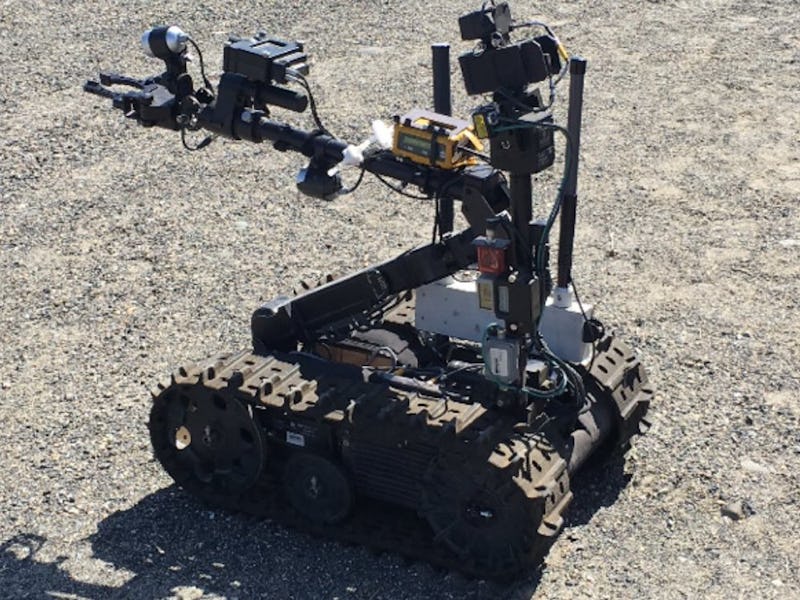
A major nuclear power and nuclear science facility near Hanford, Washington is now in the midst of a declared emergency, following the collapse Monday morning of a tunnel leading to a plutonium “finishing plant.” Though there were thankfully no workers in the tunnel at the time of the collapse, those in the rest of the facility have been told to “take cover.” As of Tuesday, those nuclear power plant workers will remain on the grounds until authorities can get a better read on the danger around the site.
The state’s Department of Ecology has reportedly confirmed that there has been no detected radiation leak, and no confirmed threat to the health of workers.
That said, at 11:13 a.m. local time (2:13 p.m. Eastern), the U.S. Department of Energy’s Hanford.gov page announced that it sent in a TALON robot — specifically the Hazmat model — to survey the area and capture video:
Crews are currently surveying the area near the PUREX tunnels for contamination. Crews are using hand surveying techniques in the outer areas around the PUREX facility. At and near the area of subsidence crews have deployed a TALON, which is a remote operated surveying device that is capable of radiological and industrial hygiene monitoring as well as capturing video footage. The TALON device allows crews to safely survey potential areas of contamination from a distance of up to ½ mile.
Here’s a photo of the robot on-site from local media:
The robot can detect radiation, volatile gases, and trace explosives and has been used in situations from the aftermath of 9/11 to the Boston Marathon bombing. It was introduced in 1995, and some 4,000 have been sold since, according to the website for QinetiQ North America, its Waltham, Massachusetts-based manufacturer.
By 3:40 p.m. local time, the Department of Energy announced that the workforce had left the site safely, except those working on the recovery, and that “there has been no indication of worker exposure or an airborne radiological release.”
The Hanford facility itself has long used a robot arm for cleaning its waste storage tanks, and the mining of nuclear material from the ground was long ago handed off to remotely operated mining rigs.
Cleanup of the Fukushima nuclear facility has also fallen to robots, but entering a melted down nuclear reactor is a bit different than surveying a field for human safety; the biggest problem with Fukushima robots is not designing or even building them, but keeping them operational in the hellish conditions of a fully apocalypsed nuclear power station.
It’s a problem to which robotics experts have tried many different solutions over the years since the disaster.
This photo shows a 20 foot by 20 foot area of collapsed ground near the site.
Right now, Hanford seems to be issuing blanket permissions for all non-essential workers in the larger “200 East” area to go home early, but again, there is no specific evidence of any health risk to workers in the station itself, let alone for those in the surrounding area.